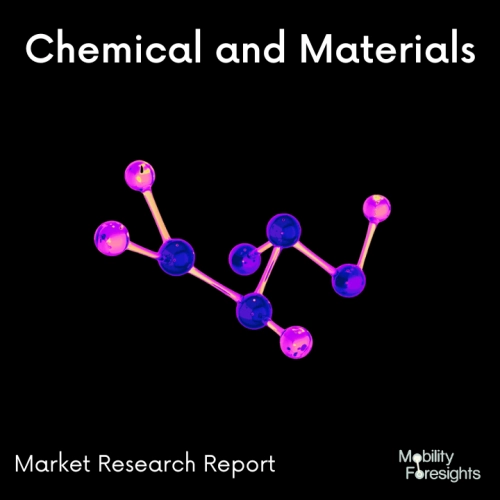Canada ULTRAVIOLET (UV) CURABLE RESIN MARKET
INTRODUCTION
The Canada Ultraviolet (UV) Curable Resin Market focuses on the development, production, and application of resins that cure or harden when exposed to ultraviolet light. UV curable resins are widely used in coatings, adhesives, printing inks, and 3D printing due to their rapid curing time, superior performance, and environmental benefits. These resins offer excellent chemical resistance, hardness, and durability, making them suitable for various industrial and consumer applications.
Key types of UV curable resins include:
- Epoxy Acrylates: Known for high adhesion and excellent chemical resistance, widely used in coatings and adhesives.
- Polyester Acrylates: Offer flexibility and toughness, suitable for flexible packaging and printing inks.
- Urethane Acrylates: Provide superior abrasion resistance and elasticity, used in high-performance coatings.
- Silicone Acrylates: Offer low surface tension and high slip properties, ideal for optical and electronic applications.
- Acrylic Acrylates: Versatile resins used in adhesives, coatings, and printing inks.
The Canada UV curable resin market is expanding due to growing environmental regulations, increasing demand for high-performance materials, and advancements in UV curing technologies.
GROWTH DRIVERS FOR Canada UV CURABLE RESIN MARKET
Several factors are driving the growth of the UV curable resin market in Canada:
- Growing Demand for Eco-Friendly Solutions: UV curable resins are solvent-free and have low VOC emissions, aligning with stringent environmental regulations in Canada.
- Rising Adoption in Coatings and Adhesives: Rapid curing time and high durability make UV resins ideal for industrial coatings and adhesive applications in Canada.
- Expanding Applications in 3D Printing: UV resins are widely used in stereolithography (SLA) and digital light processing (DLP) 3D printing for high-precision applications in Canada.
- Technological Advancements in UV Curing: Innovations in UV LED technology are enhancing curing efficiency and expanding the scope of UV resin applications in Canada.
- Increased Use in Electronics: UV curable resins provide protective coatings for electronic components, meeting the demand for miniaturized and durable devices in Canada.
Canada UV CURABLE RESIN MARKET TRENDS
Emerging trends are shaping the UV curable resin market in Canada, driven by innovation and evolving industry requirements:
- Shift Toward Bio-Based UV Resins: Development of bio-based and sustainable UV resins is gaining traction as companies prioritize eco-friendly solutions in Canada.
- Integration with Advanced Manufacturing: UV resins are increasingly used in high-tech applications like microelectronics, photonics, and advanced manufacturing in Canada.
- Growth in Packaging and Printing: UV resins are widely adopted in flexible packaging and UV ink formulations for high-speed printing in Canada.
- Focus on High-Performance Coatings: Demand for scratch-resistant, weatherproof, and chemical-resistant coatings is driving innovations in UV curable resins in Canada.
- Expansion in Automotive Applications: UV resins are used for protective and decorative coatings in automotive parts, supporting lightweight and durable components in Canada.
CHALLENGES IN THE Canada UV CURABLE RESIN MARKET
Despite its potential, the UV curable resin market in Canada faces several challenges:
- High Initial Costs: Advanced UV curing systems and raw materials can be expensive, limiting adoption among small and medium enterprises in Canada.
- Limited Penetration in Developing Regions: Lack of awareness and infrastructure for UV curing technology may hinder market growth in certain regions of Canada.
- Raw Material Price Volatility: Fluctuations in raw material prices can impact production costs and profit margins in Canada.
- Performance Limitations in Specific Applications: UV resins may have limited applicability in areas requiring deep curing or high-temperature resistance in Canada.
- Regulatory Compliance: Ensuring compliance with evolving safety and environmental standards poses challenges for manufacturers in Canada.
Canada UV CURABLE RESIN MARKET SEGMENTS AND APPLICATIONS
The UV curable resin market in Canada caters to diverse applications across industrial and consumer sectors:
- Coatings: Used in wood, plastic, and metal coatings for furniture, automotive parts, and industrial equipment in Canada.
- Adhesives: High-strength and quick-curing UV adhesives are employed in electronics, medical devices, and automotive assembly in Canada.
- Printing Inks: UV curable inks are used in packaging, labels, and large-format printing due to their rapid drying and vibrant colors in Canada.
- 3D Printing: UV resins are essential in SLA and DLP 3D printing for prototyping and manufacturing precision components in Canada.
- Electronics: Protective coatings for circuit boards, sensors, and electronic components are a growing application in Canada.
- Optical Applications: UV resins are used in lenses, optical fibers, and display technologies for their clarity and durability in Canada.
Canada UV CURABLE RESIN MARKET SIZE AND FORECAST
The Canada UV Curable Resin Market is projected to reach $XX billion by 2030, growing at a XX% CAGR. Growth is driven by increasing demand for environmentally friendly solutions, expanding industrial applications, and advancements in UV curing technologies in Canada.
- Epoxy Acrylates: Expected to dominate the market due to their superior adhesion and chemical resistance in coatings and adhesives in Canada.
- Urethane Acrylates: Anticipated to grow significantly with rising applications in high-performance coatings and automotive industries in Canada.
- Polyester Acrylates: Projected to witness strong demand for flexible packaging and printing ink formulations in Canada.
- Bio-Based UV Resins: Demand is expected to rise as sustainability becomes a priority in industrial applications in Canada.
- 3D Printing Applications: Increasing adoption of UV resins in additive manufacturing will contribute to steady market growth in Canada.
OTHER RELATED REPORTS

